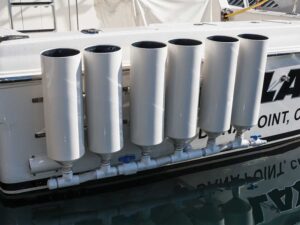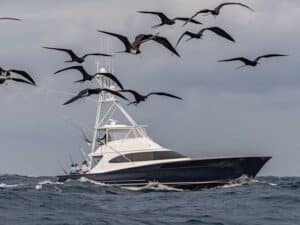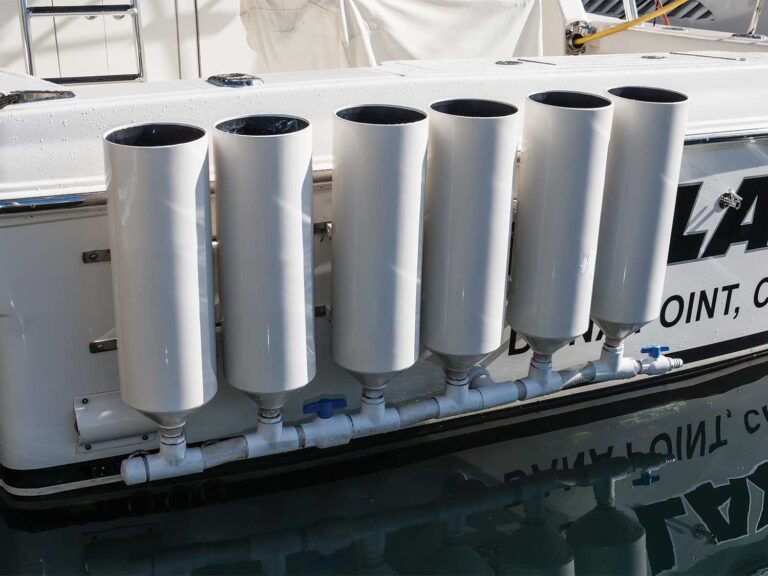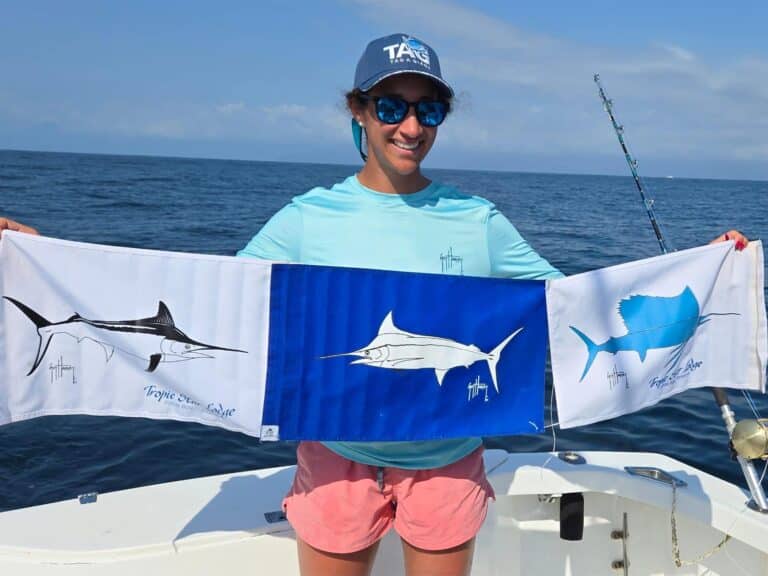Shop This Video at CaptHarry.com
Penn International VS Two-Speed Reel: $549.95 click here Capt. Harry’s Destination Series 7-foot 15/25 Sailfish Rod: $204.95 click here Berkley Pro-Spec Chrome Blaze Orange 20-Pound-Line: $37.20-139.95 click here Owner 5195 Solid Rings: $4.75 click here Ceramic Kite Ring: $9.95 click here Oval 2.5-inch Floats (12 pack): $12.00 click here Sampo Chrome Ball Bearing Snap Swivels #4: $31.25 click here Momoi Presentation Fluorocarbon (40-pound): $46.50 click here Mustad 39938NP-BN Florida Sailfish Circle Hook (100 pack): $23.75-39.95 click here Egg Lead Sinkers (100 pack): $3.15-3.75 click here
Kite-fishing for sailfish is an effective technique: Few sails can resist a live bait dangling from a fishing kite. The struggling baitfish sends out distress signals as it thrashes on the surface of the water, and the leader remains out of sight as well, suspended above the bait. Most teams will fish two kites, which are weighted to fly apart from one another, with two to three baits per kite. This helps boats cover an impressive amount of water with their spreads.
Small conventional reels like those made by Penn, Shimano and others are a popular starting point, thanks to their smooth lever-drag systems, high rate of retrieve and their line capacity. These are matched to rods in the 15- to 25-pound class. The reels are spooled with 20-pound-test line, with high-visibility line being a good choice. High-vis lines allow the crew to keep track of everything once all the kite lines are up, and it also helps the captain once a fish is hooked up.
The rigging begins with a short Bimini twist knot to form a doubled line. A metal or ceramic ring should follow. This will be used for the release clip so the line doesn’t abrade itself on the clip. A brightly colored float is next. This aids the angler in keeping track of the bait’s position in the spread. On windy days, a small egg weight is added so the bait remains in the water, followed by a small bead and a high-quality ball-bearing swivel (the bead keeps the sinker from jamming into the swivel knot).
The leader is usually about 15 feet of 40- to 60-pound-test fluorocarbon, which is snelled, crimped or knotted to a circle hook that’s sized to fit the bait.







